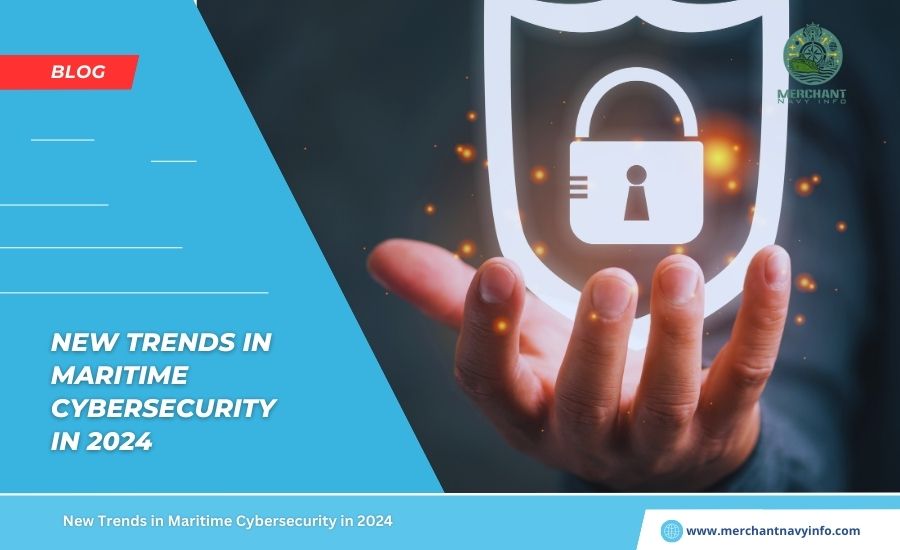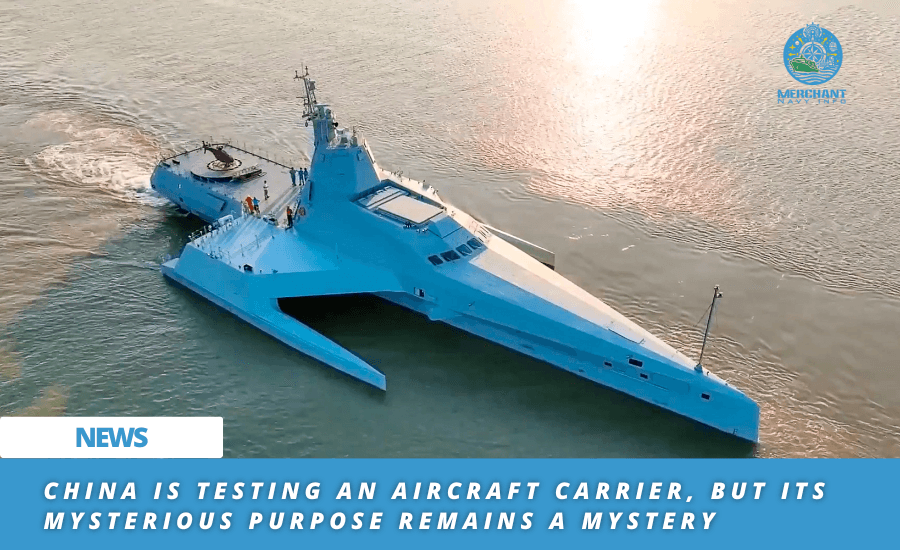
Navigating the Rising Tide: Maritime Cybersecurity Trends in 2024
Like many others, the maritime industry is undergoing a rapid digital transformation. While this brings efficiency and innovation, it exposes ships and their infrastructure to evolving cyber threats. In 2024, staying ahead of these risks is critical for the safety and security of maritime operations. Let’s dive into the key trends shaping maritime cybersecurity this year.
The maritime industry, once relatively isolated from the digital world, is now deeply interconnected. Ships, ports, and the entire supply chain rely heavily on technology for navigation, communication, and logistics. While this digital transformation brings efficiency and innovation, it also exposes the industry to a growing array of cyber threats.
Additionally, safeguarding the maritime sector from these threats has become paramount in 2024, leading to significant shifts in cybersecurity strategies and technologies. This article explores the emerging trends and challenges shaping maritime cybersecurity in 2024, shedding light on the ongoing efforts to protect this vital global infrastructure.
1. Artificial Intelligence (AI) and Machine Learning: The Digital Watchdogs
Artificial intelligence (AI) is revolutionizing cybersecurity across various industries, and the maritime sector is no exception. The sheer volume and complexity of data generated by modern ships, ports, and supply chain networks can be overwhelming for human analysts to monitor effectively. AI-powered tools step in to bridge this gap, offering unparalleled capabilities in threat detection, analysis, and response.
One of the primary applications of AI in maritime cybersecurity is anomaly detection. AI algorithms can sift through massive datasets, identifying unusual patterns in network traffic, system behavior, or user activities that may signal a cyberattack in progress. By recognizing these anomalies in real-time, security teams can quickly investigate and respond to potential threats before they cause significant damage.
Moreover, AI’s predictive capabilities are proving invaluable in forecasting potential vulnerabilities and risks. By analyzing historical data and identifying patterns, AI models can predict the likelihood of specific cyberattacks, enabling organizations to proactively strengthen their defenses and prioritize resources accordingly.
Perhaps one of AI’s most transformative aspects in maritime cybersecurity is its ability to automate responses to threats. AI-powered systems can rapidly isolate compromised systems, block malicious traffic, and deploy countermeasures with minimal human intervention. This swift response capability is crucial in mitigating the impact of cyberattacks, which can spread rapidly through interconnected networks.
In 2024, adopting AI and machine learning will become increasingly widespread in the maritime industry. As these technologies mature and evolve, they are expected to play a more significant role in safeguarding maritime assets and operations from cyber threats. The shift towards AI-powered defense mechanisms is not only a trend but a necessity to keep pace with the growing complexity and sophistication of cyberattacks.
2. Securing the Supply Chain: A Chain is Only as Strong as its Weakest Link
Maritime supply chains are intricate webs of interconnected systems that span from ship to shore and involve many stakeholders, including vessel owners, port operators, logistics providers, and communication networks.
The complexity and interdependence of these systems create a vast attack surface for cyber threats. A single vulnerability in any part of the chain can have cascading effects, compromising not only the immediate target but also potentially disrupting global trade and logistics.
In 2024, the maritime industry recognizes the importance of a holistic, end-to-end security approach. This entails securing not only the vessels themselves but also every node within the supply chain.
Robust security measures must be implemented at ports, where cargo is handled and transferred, and within logistics networks, where data is exchanged and decisions are made. Furthermore, communication networks, which are vital for coordination and control, must be fortified against unauthorized access and disruptions.
Comprehensive risk assessments are crucial to achieving end-to-end security. These assessments involve identifying potential vulnerabilities, prioritizing them based on their potential impact, and implementing appropriate mitigation measures. By proactively addressing weaknesses, organizations can strengthen the overall resilience of the supply chain.
Collaboration is another key pillar of supply chain security. Information sharing between stakeholders, including government agencies, industry associations, and private companies, enables a more comprehensive understanding of the threat landscape. Sharing threat intelligence, best practices, and lessons learned allows the industry to collectively address emerging risks and develop more effective defenses.
3. Endpoint Security: Protecting the Front Lines
Modern ships have many interconnected devices, ranging from navigation systems and radar equipment to engine control systems and cargo management software. These devices, often called endpoints, are the front lines of maritime cybersecurity. Each endpoint represents a potential cyberattack entry point, making their protection paramount.
Maritime organizations are deploying robust security measures on individual devices to bolster endpoint security. This includes installing antivirus software to detect and remove malware, deploying firewalls to control network traffic, and implementing intrusion detection systems to identify unauthorized access attempts. Additionally, rigorous patch management is essential to ensure that software and firmware are updated promptly to address known vulnerabilities.
Implementing strict access controls is another critical aspect of endpoint security. User authentication and authorization mechanisms should be in place to ensure that only authorized personnel can access sensitive systems and data. This includes strong password policies, multi-factor authentication, and role-based access controls. By safeguarding endpoints, the maritime industry reduces the attack surface available to cybercriminals and protects critical systems from compromise.
4. Cybersecurity Awareness and Training: The Human Firewall
Despite technological advancements, human error remains a significant factor in many cybersecurity breaches. Crew members and shore-based staff may inadvertently click on malicious links, open infected attachments, or fall victim to social engineering attacks. Recognizing this, maritime organizations invest heavily in cybersecurity awareness and training programs.
These programs aim to educate personnel about the various types of cyber threats, the tactics used by attackers, and the best practices for identifying and responding to potential incidents. Comprehensive training covers phishing emails, ransomware attacks, and the importance of strong passwords. Additionally, regular simulations and drills are conducted to test the organization’s cybersecurity readiness and response capabilities.
Creating a culture of security is also crucial. Employees should be encouraged to report any suspicious activity or potential security breaches promptly. Open communication channels and a supportive environment where staff feel comfortable reporting incidents without fear of reprisal are essential for effective cybersecurity. By empowering personnel with knowledge and skills, maritime organizations can create a human firewall that complements their technological defenses.
5. Regulatory Compliance and Standards: Setting the Course for Security
The International Maritime Organization (IMO), recognizing the growing importance of cybersecurity in the maritime domain, has established cybersecurity guidelines and standards. These guidelines provide a framework for managing cyber risks, outlining best practices for risk assessment, mitigation, and incident response. Compliance with these guidelines is becoming increasingly important for several reasons:
- Legal and insurance purposes: Non-compliance can lead to legal penalties and difficulties in obtaining insurance coverage.
- Building trust: Adherence to recognized standards demonstrates a commitment to cybersecurity best practices, fostering trust among customers, partners, and regulators.
- Improving overall security: Following established guidelines helps organizations identify and address vulnerabilities, strengthening their overall security posture.
In 2024, maritime organizations will prioritize compliance with IMO guidelines and other relevant standards. They will invest in cybersecurity audits, assessments, and certifications to ensure that their systems and processes meet the required security benchmarks.
6. Integrating Cybersecurity with Physical Security: A Unified Front
Cyberattacks can have far-reaching consequences that extend beyond the digital realm. For example, a successful cyberattack on a vessel’s navigation system could lead to a collision or grounding, resulting in significant damage, loss of life, and environmental harm. Recognizing this, the maritime industry is increasingly adopting a unified approach to security, integrating cybersecurity with physical security measures.
This integrated approach combines cybersecurity and physical security measures under a single comprehensive framework. It requires close collaboration between cybersecurity and physical security teams to share threat intelligence, assess risks, and develop coordinated response plans.
Additionally, critical infrastructure, such as access control systems, surveillance cameras, and alarm systems, must be designed with cybersecurity in mind to prevent unauthorized access and tampering.
By integrating cybersecurity and physical security, the maritime industry can create a more robust and comprehensive security posture protecting digital and physical assets.
7. Automated Threat Response: Fighting Fire with Fire
The speed and sophistication of cyberattacks demand rapid response. Traditional manual incident response processes can be time-consuming and ineffective against fast-moving threats. Maritime organizations increasingly turn to automated threat response systems to address this challenge.
These systems leverage artificial intelligence and machine learning algorithms to detect and analyze threats in real time. When a potential threat is identified, automated responses can be triggered, such as isolating compromised systems, blocking malicious traffic, and deploying countermeasures. This allows organizations to react quickly and effectively, minimizing the impact of cyberattacks.
Automated threat response systems improve response times and reduce cybersecurity teams’ workloads, allowing them to focus on more strategic tasks. However, it’s important to note that automated responses should be carefully designed and monitored to avoid unintended consequences or false positives.
8. Collaboration and Information Sharing: Strength in Numbers
Maritime cybersecurity is not a challenge that any single organization can tackle alone. The industry’s interconnected nature means that a cyberattack on one entity can have ripple effects throughout the entire supply chain. Recognizing this, collaboration and information sharing have become essential components of effective cybersecurity strategies in 2024.
Collaboration takes many forms in the maritime cybersecurity landscape. Organizations actively share threat intelligence and exchange information about emerging threats, vulnerabilities, and attack patterns. This enables a collective understanding of the evolving threat landscape and empowers individual organizations to make informed decisions about their cybersecurity measures.
Participation in industry forums and working groups is another crucial aspect of collaboration. These forums bring together experts from various sectors of the maritime industry to develop best practices, standards, and guidelines for cybersecurity. By working together, the industry can establish a common framework for protecting critical infrastructure and ensuring the resilience of maritime operations.
Partnerships with government agencies are also becoming increasingly important. Government agencies often have access to classified threat intelligence and resources that can be invaluable in identifying and responding to cyber threats. By collaborating with government entities, maritime organizations can benefit from this expertise and strengthen their overall cybersecurity posture.
The power of collaboration lies in its ability to amplify the capabilities of individual organizations. The maritime industry can collectively build a stronger, more resilient defense against cyber threats by sharing knowledge, resources, and expertise. This collaborative approach is essential for protecting individual assets and safeguarding the global maritime ecosystem as a whole.
The Future of Maritime Cybersecurity
The trends outlined in this article underscore the dynamic and evolving nature of maritime cybersecurity. As technology continues to advance, so too will the tactics and techniques employed by cybercriminals. Staying informed about emerging threats, investing in cutting-edge technologies, and fostering collaboration will be crucial for protecting the safety, security, and operational efficiency of maritime assets in the years to come.
The future of maritime cybersecurity will likely see even greater integration of AI and machine learning, the development of more sophisticated threat detection and response systems, and a continued emphasis on collaboration and information sharing. By embracing these trends and proactively addressing the challenges that lie ahead, the maritime industry can navigate the digital age with confidence, ensuring that the vital arteries of global trade remain secure and resilient.
Challenges in Maritime Cybersecurity
While the trends outlined above offer promising solutions, the maritime industry still faces significant challenges in the realm of cybersecurity:
Legacy Systems: Many vessels and maritime infrastructure rely on outdated legacy systems that are difficult to secure and update.
Limited Resources: Smaller maritime companies often lack the resources and expertise to implement robust cybersecurity measures.
Crew Awareness: Seafarers may not be adequately trained to identify and respond to cyber threats, making them vulnerable targets.
Interconnectedness: The increasing interconnectedness of maritime systems creates more potential entry points for attackers.
Conclusion
In 2024, maritime cybersecurity is at a critical juncture. The industry is embracing new technologies and strategies to protect its assets and operations from evolving threats. However, significant challenges remain, requiring ongoing vigilance, collaboration, and investment in cybersecurity solutions. By staying abreast of emerging trends and proactively addressing vulnerabilities, the maritime sector can ensure the safe and secure operation of global shipping in an increasingly digital world.










